For its 50th birthday celebrations, the Asian Art Museum (AAM) in San Francisco – the most important of its kind outside Asia – has pulled off a coup: for the exhibition ‘Emperors’ Treasures: Chinese Art from the National Palace Museum, Taipei’, the National Palace Museum in Taipei has lent about 150 pieces of their imperial masterworks, many leaving Asia for the first time.
‘This collection of Chinese art is the finest in the entire world along with Beijing’s’, says Jamie Chu, curatorial assistant at the AAM who has lived in Taipei and studied the collection. ‘It is comprehensive. It is high quality. The pieces were collected by emperors and kept as imperial treasures.’ Put simply: if you went to Taiwan, a visit to the museum would be top of your to-do list. ‘Getting this indicates the pull of our museum, and the understanding by Taiwan of the importance of this loan to us’, explains Chu. ‘This is the absolute “best of the best” of Chinese imperial art’, adds AAM’s director, Jay Xu.
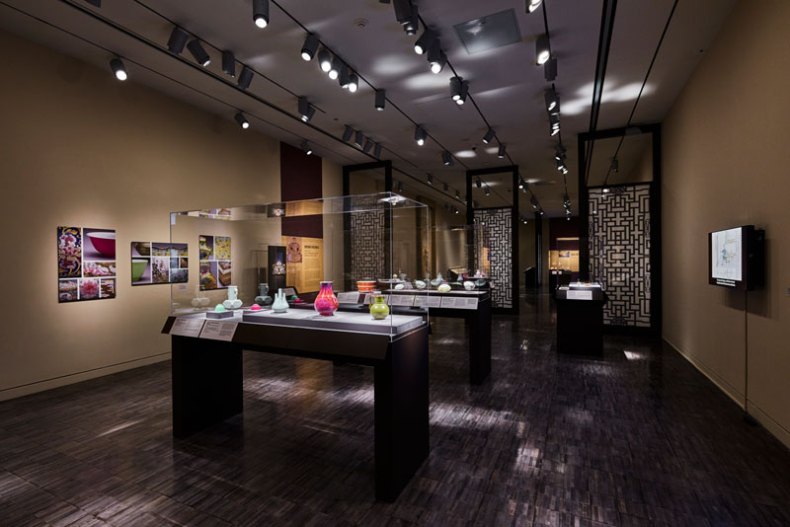
‘Emperors’ Treasures: Chinese Art from the National Palace Museum’ at the Asian Art Museum, San Francisco.
So, if you cannot go to Taipei, getting to San Francisco, or Houston – the show travels to the MFA in October (with a few changes of the light-sensitive objects) – is your next best option.
The loan is a selection of the most prized possessions of eight emperors and empresses, which were passed from dynasty to dynasty and later kept in Beijing’s Forbidden City. As the collection was refined, successive emperors commissioned new pieces and even created some themselves, imbibing many works with a drop of the royal owner’s personality. The excellent catalogue highlights this.
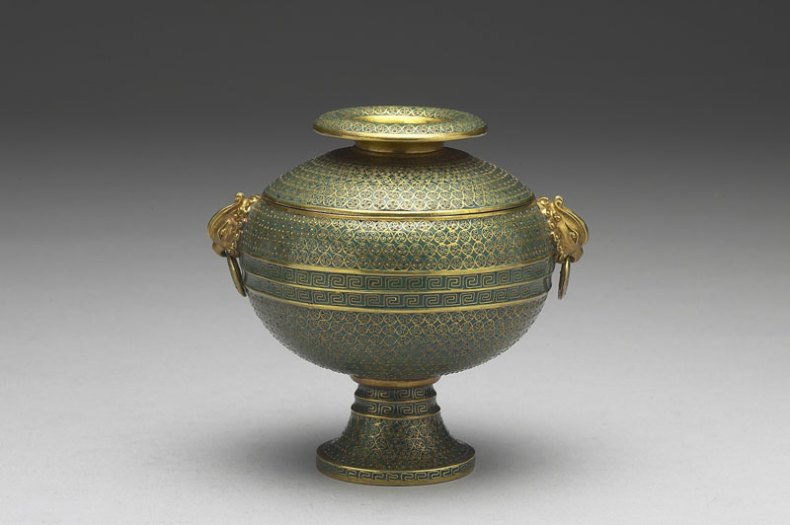
Ritual dou vessel with phoenix-shaped handles (Qing dynasty, reign of Emperor Yongzheng: 1723–35), by the Imperial Workshop, Beijing. Photo: © National Palace Museum, Taipei
There are paintings, ceramics, jades, metalwork, and more. Every piece is exquisite – one dares say near-perfect – evoking a sophisticated court patronage and lifestyle. A delicate tea bowl with rouge red glaze made for Emperor Yongzheng (r. 1723–35) testifies to his extravagant investment in the Jingdezhen porcelain factory. Emperor Qianlong (r. 1735–96) commissioned his cream jade seal whose scholarly carving symbolises a unified China; an 8cm high Buddha of gold filigree and pearls for adorning a summer court hat dates to his reign, too. Such objects tell much about the overall quality of art patronage. Emperor Qianlong, an accomplished painter who has one of his own paintings in the show, An Auspicious Start (1772), commissioned small metal treasure boxes to hold his favourite antique pieces; nine of these little bronzes, each on its carved sandalwood base, are in the show.
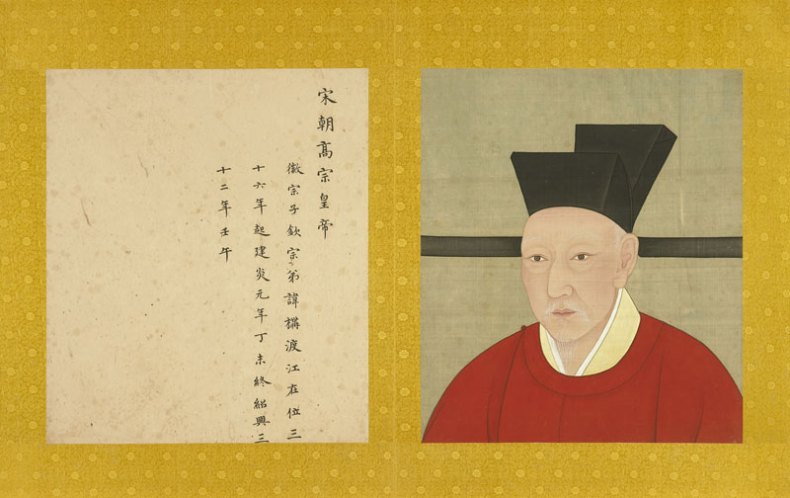
Half-portrait of Emperor Gaozong, Zhao Gou (Southern Song dynasty: 1127–1279) Photo: © National Palace Museum, Taipei
Paintings span the 12th to the 20th centuries. The earliest is a half-portrait of the black-hatted, red-robed Emperor Gaozong (r.112–62) who – a gifted calligrapher himself – re-established the Southern Song dynasty’s capital, Lin’an, luring painters and scholars there. A pair of portraits made a century later record the renowned Kubla Khan (1215–94) of the Yuan dynasty (1271–1368) and his tough-looking consort Empress Chabi, known for her frugality but here decked out in strings of pearls and a fancy scarlet crown.
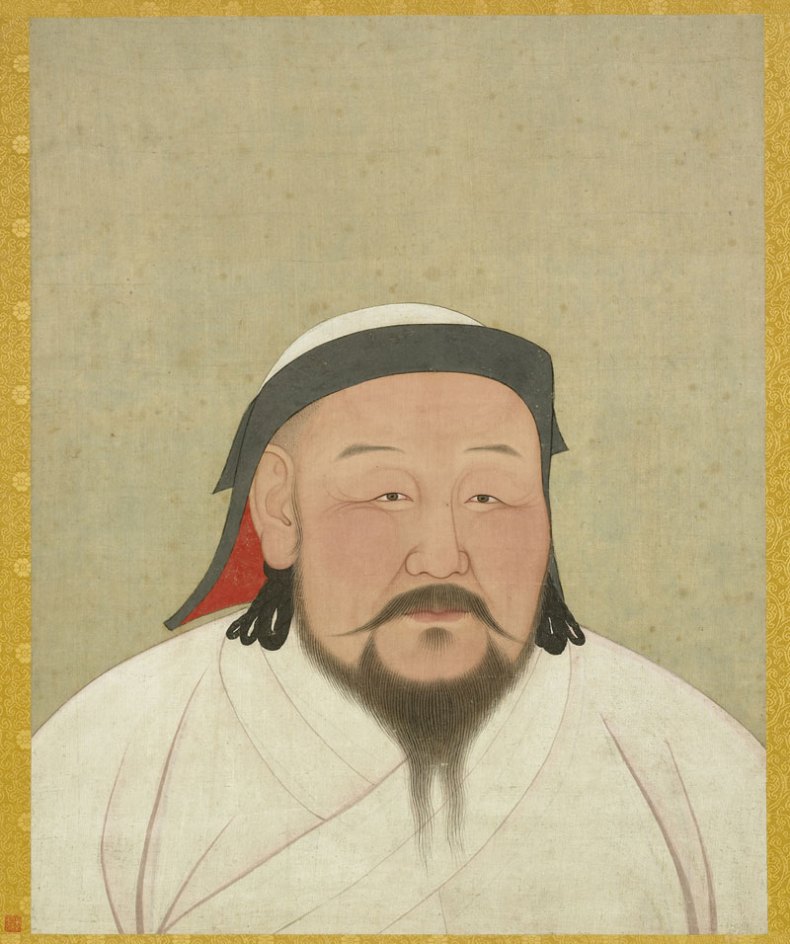
Kublai Khan as the first Yuan emperor, Shizu (Yuan dynasty: 1271–1368). Photo: © National Palace Museum, Taipei
Perhaps the most surprising piece for the non-specialist is a chunk of ingeniously dyed jasper whose hard stone is made to resemble, as Miss Chu puts it, ‘a piece of soft pork belly’, specifically the popular fatty pork dish dongpo rou. Dating broadly to the Qing dynasty (1644–1911), it is one of the National Palace Museum’s most popular works. Intellectually, it symbolises the Chinese aesthetic of seeking harmony between humans and nature, and was admired as qiaodao (‘smart carving’). More prosaically, over a thousand people queue up each day to glimpse it in Taipei where, Miss Chu explains, ‘It gives a wonderful feeling when you see it, you’re reminded of that dish and your childhood. You see it everywhere in Taiwan, even on t-shirts.’
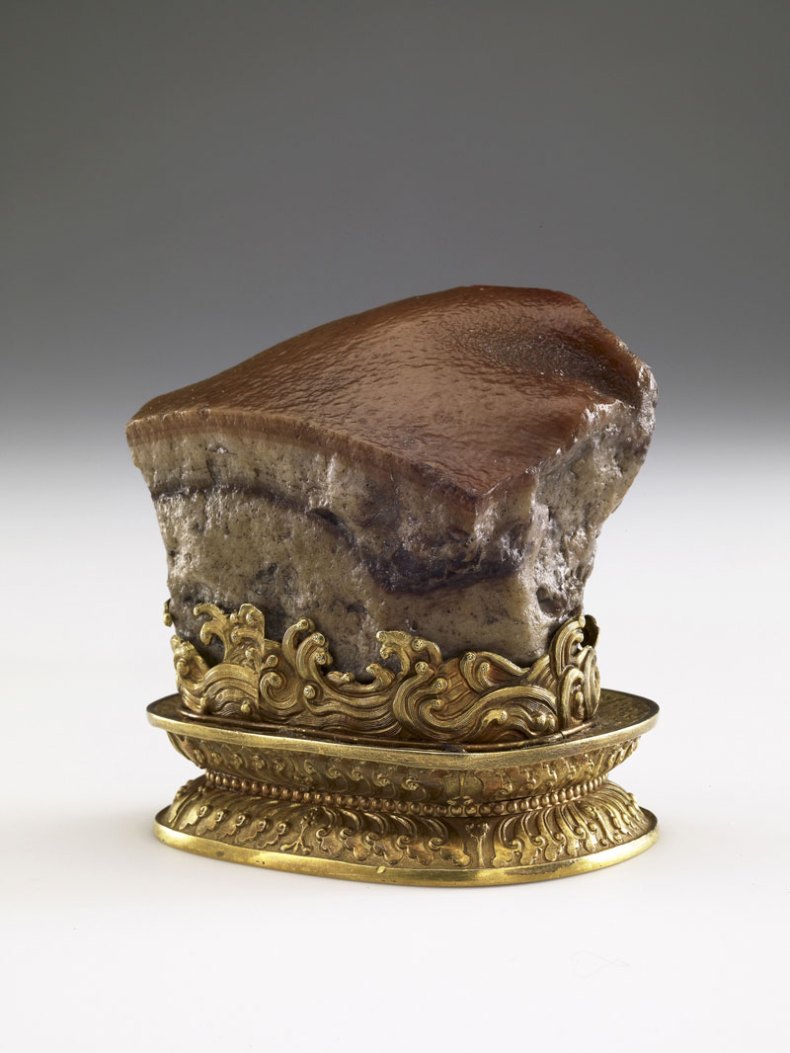
Meat-shaped stone (Qing dynasty: 1644–1911). Photo: © National Palace Museum, Taipei
Miss Chu has been in that queue. ‘But here in San Francisco’, she says, ‘people can see this and all these objects at leisure, closely, with no queues. That makes my very happy.’
‘Emperors’ Treasures: Chinese Art from the National Palace Museum, Taipei’ is at the Asian Art Museum, San Francisco until 18 September. It travels to the MFA Houston from 23 October–22 January 2017.
Unlimited access from just $16 every 3 months
Subscribe to get unlimited and exclusive access to the top art stories, interviews and exhibition reviews.

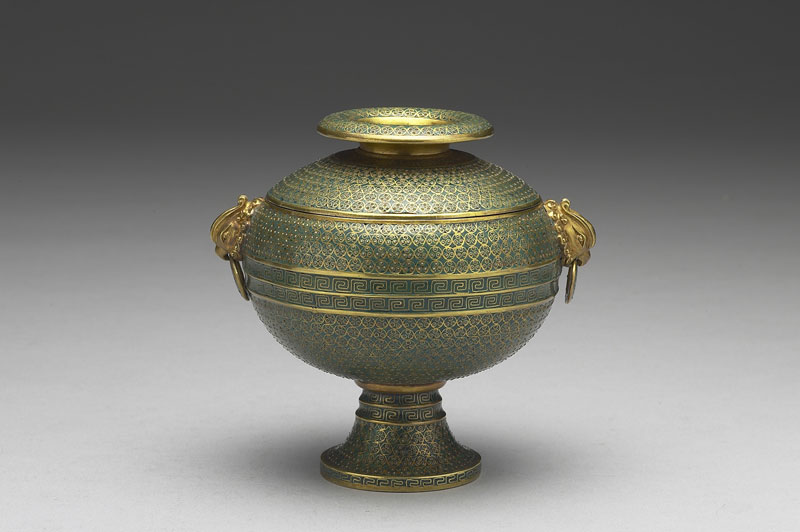
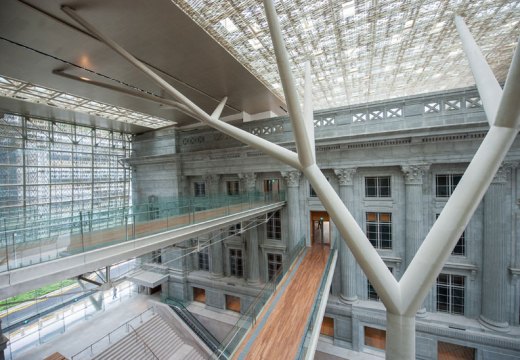
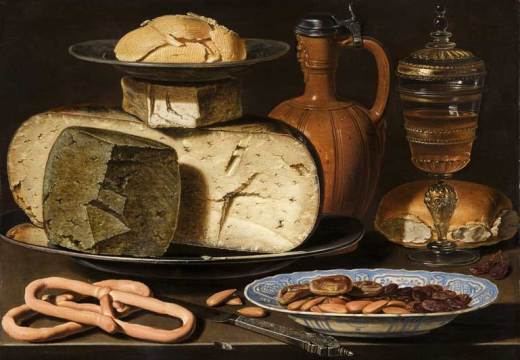
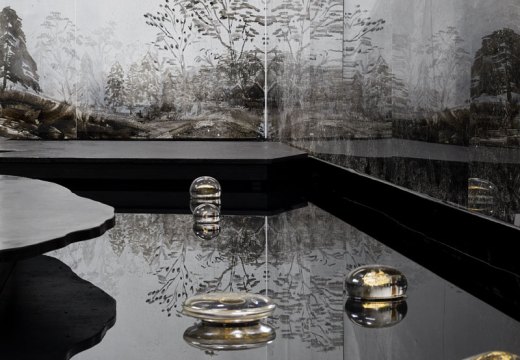









![Masterpiece [Re]discovery 2022. Photo: Ben Fisher Photography, courtesy of Masterpiece London](http://www.apollo-magazine.com/wp-content/uploads/2022/07/MPL2022_4263.jpg)
Has the Fitzwilliam lost the hang of things?